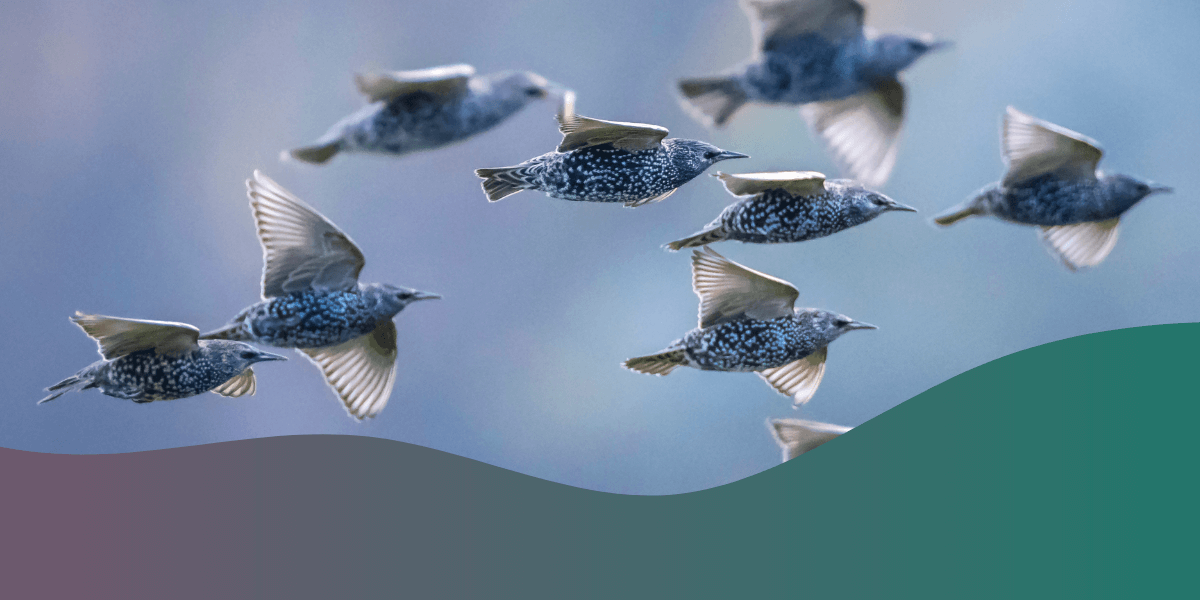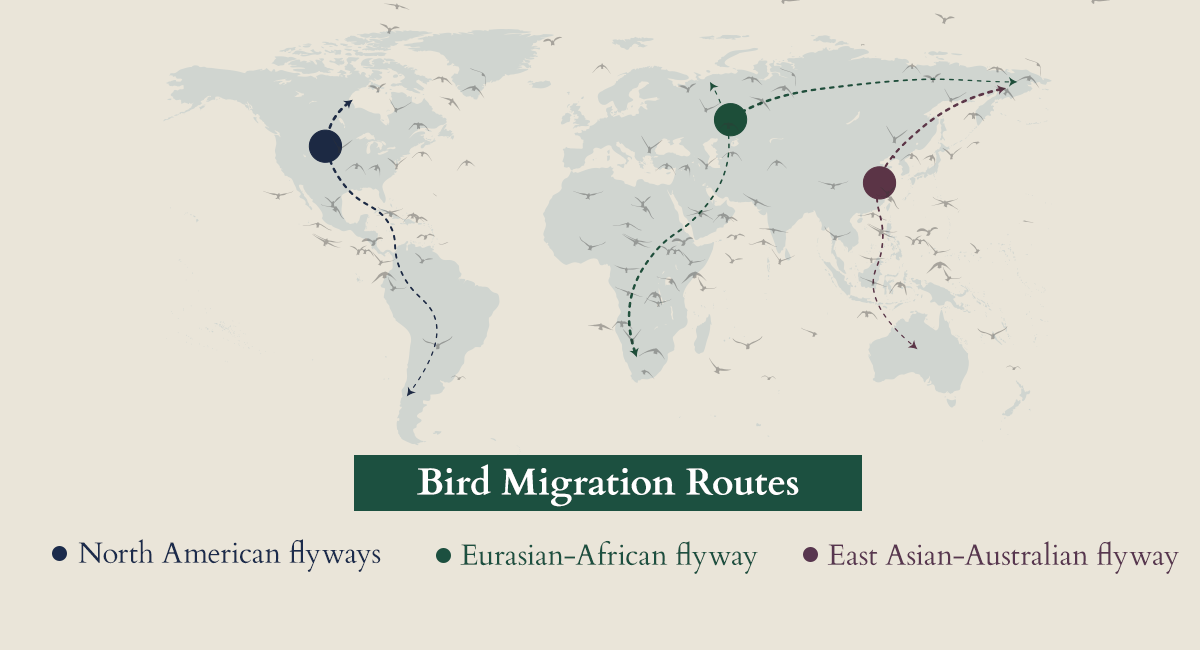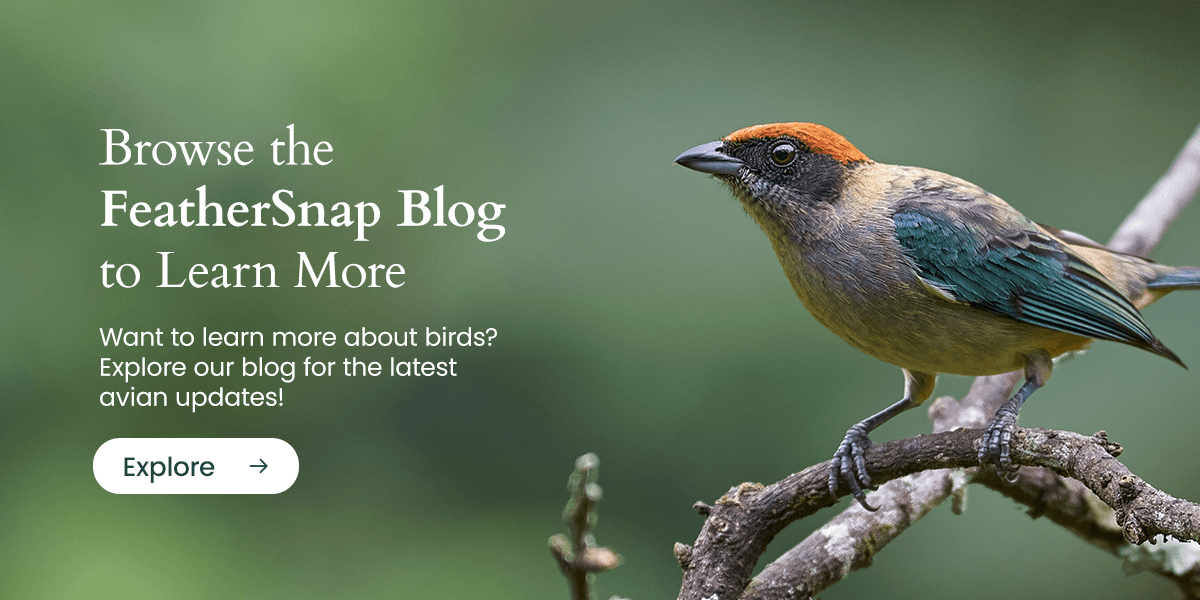

When you look up at the sky and see a flock of birds soaring through the air in a V-formation, you're likely witnessing the spectacular sight of bird migration. This natural phenomenon occurs annually and involves certain bird species traveling hundreds or even thousands of miles to far-off regions.
Approximately 20% of all birds make this lengthy trip to feed and raise their young. By undertaking this challenging journey, these birds ensure future generations can continue to marvel at dozens of beautiful bird varieties and understand the habits of bird seasonal migration.
Why Do Birds Migrate?
North American birds begin to head south from August through November and return in the springtime when days are longer and food sources are plentiful. Seasonal migration birds make the long trek to warmer areas for two main reasons — better ecological and breeding conditions. Here's a more detailed look at why they make their voyage.
Environmental Factors
Food and warmth are two of the most basic needs for all life forms — yet they are hard to come by in winter for many animals. While some cold-weather birds have natural tendencies to keep warm during winter, such as increasing their body fat, fluffing their feathers and cuddling with the rest of the flock, other bird species cannot withstand these cold temperatures. Once the temperature drops, these birds instinctively know they must head to warmer areas to increase their chances of survival.
Colder temperatures also affect birds' ability to access their diet of insects, buds, grain or seeds. In contrast, warmer regions provide the conditions for these food sources to flourish, providing a welcoming feast for birds at the end of their journey.
Reproductive Factors
Migratory birds' annual cycle comprises four main stages — breeding, migration, overwintering and finally migrating back to their original location. As winter approaches and the days get shorter, birds begin to physically prepare for their journey ahead by increasing their metabolic rate, boosting fat deposits and expanding their pectoral muscles. This allows them to cover the vast distance to their breeding grounds.
Once they arrive in the warmer climate, physical changes occur in preparation for breeding. While most birds will nest once a year, some species — such as the American robin — will repair and remake their nests four or five times each year. The abundance of food and nesting materials in their breeding grounds ensure the best chances of survival for new fledglings.
Types of Bird Migration
Birds travel varying distances to access their breeding grounds and preferred food sources. Two of the most common migration types include:
- Altitudinal migration: Birds following altitudinal migration patterns travel short distances from varying heights — for example, the top of a mountain to the bottom — to reach their breeding grounds. Prairie falcons, American dippers and yellow-eyed juncos are just some of the birds that migrate in this way.
- Latitudinal migration: This is the most common type of migration for birds and by far the most challenging. Latitudinal migration involves birds traveling across the equator from the northern to the southern hemisphere and back again in the spring.
These migration types reveal a distinguishing factor in how different bird species observe seasonal changes. Research suggests that short-distance migratory birds are more in tune with temperature fluctuations, which triggers them to start their migration journey. Long-distance migrants have no way of knowing what the weather is like in their breeding grounds, so they use day length to plan their migration.
Bird Migration Routes
Just as an airline jet has a programmed flight path, birds have an inherent ability to know where to migrate. Their flight paths are called flyways, and bird species have followed these same routes for centuries. Some of the most common flyways include:
- North American flyways: These routes span across the United States, and experts have categorized them as the Atlantic, Central, Mississippi, Central and Pacific flyways.
- Eurasian-African flyway: This flyaway connects three continents — Africa, Asia and Europe — along three main routes from the Arctic to southern Africa.
- East Asian-Australian flyway: Waterbirds dominate this flyaway, traveling great distances from Russia and Alaska to Australia and New Zealand.
As these birds travel in excess of 10,000 miles, regular stops are necessary to rest their wings and refuel their energy. Birds will identify “stopover sites" along the route by assessing the risk of predators, food availability and places to shelter, such as trees or cliff faces.


Unfortunately, the effects of climate change are a great threat to migratory birds. Rising sea levels and eroded land pose a risk to migratory birds' ability to find satisfactory spots to stop along the route. With these issues becoming more significant, bird lovers and researchers have become increasingly concerned with migratory birds' survival rates.
How Do Birds Know When to Migrate?
Here are some of the most common theories regarding bird navigation:
- Celestial cues: The sun and stars act as guiding signs for birds traveling between continents, helping them stay on course.
- Natural landmarks: Birds can recognize natural landmarks, such as rivers, mountain ranges and other bodies of water.
- Magnetic fields: Just as a compass always points north, birds pick up on the Earth's magnetic poles, pulling them in either a north or south direction.
Challenges Faced by Migratory Birds
One would think that the sheer distance of a migratory path is challenging enough, but there are a couple of other obstacles that make it tougher for seasonal migration birds. These include:
- Natural barriers: Mountains and large bodies of water present physical hurdles for birds during migration, often preventing their ability to stop and rest. Similarly, predators and environmental hazards, such as storms and strong winds, make the journey more complex.
- Anthropogenic threats: The rapidly growing human population adds a further challenge to migratory birds. Urbanization is causing the erosion of more and more natural areas, ultimately leading to extensive habitat loss. Climate change also confuses matters, as birds must adjust their migration patterns to changing temperatures and day lengths.
Browse the FeatherSnap Blog to Learn More
Birds may be small, but they're tenacious. They have an incredible ability to know when and where to migrate and which flyway is best, along with seeking out safe stopover sights to refuel on their monumental journeys.
Want to learn more about birds? Explore our blog for the latest avian updates!

